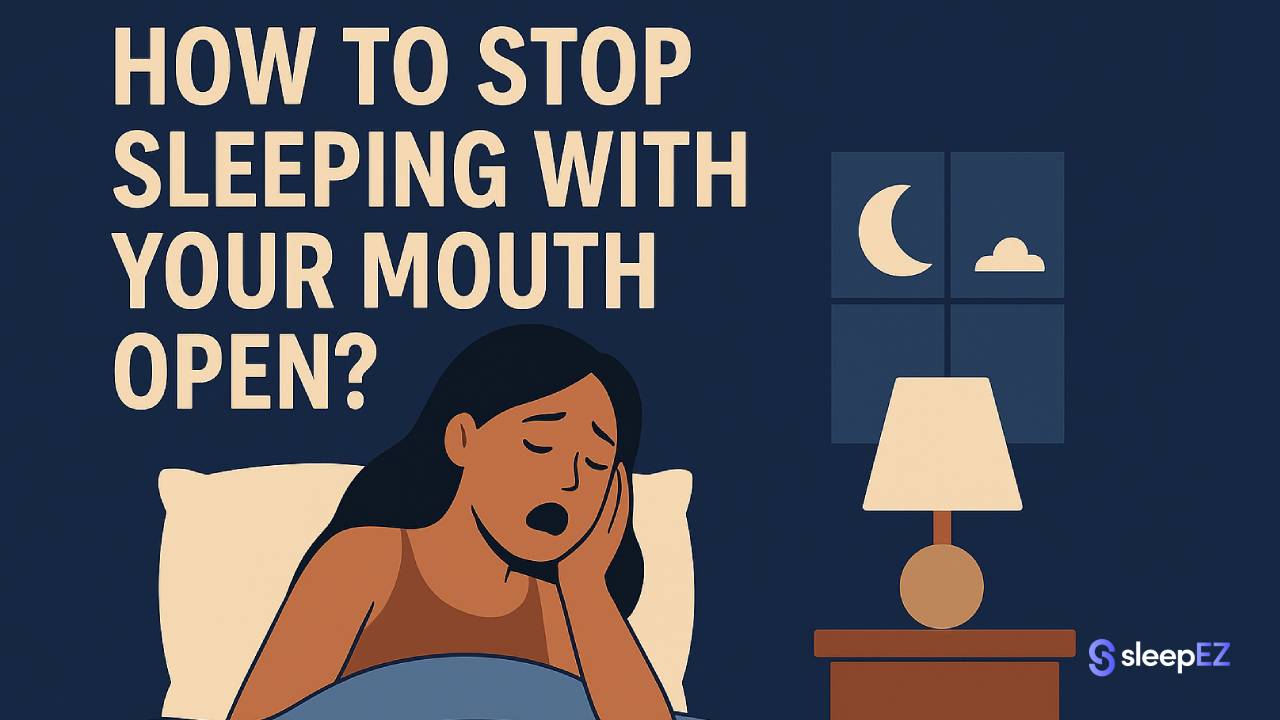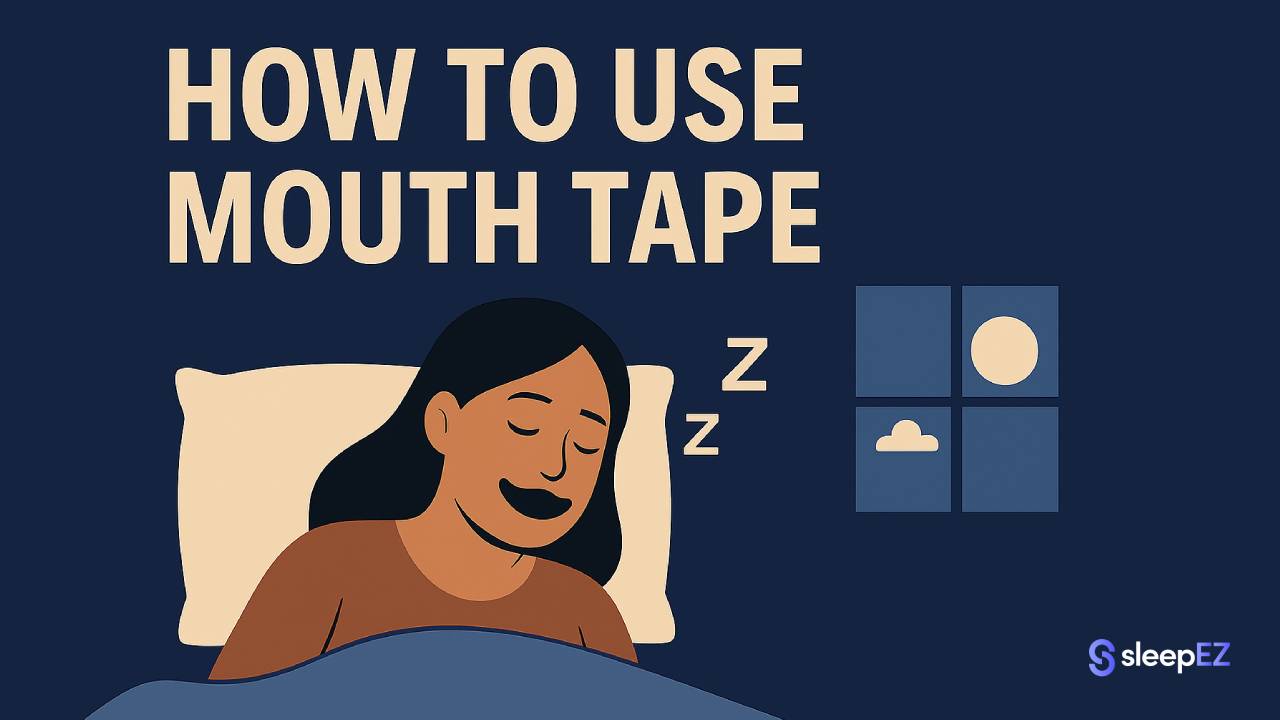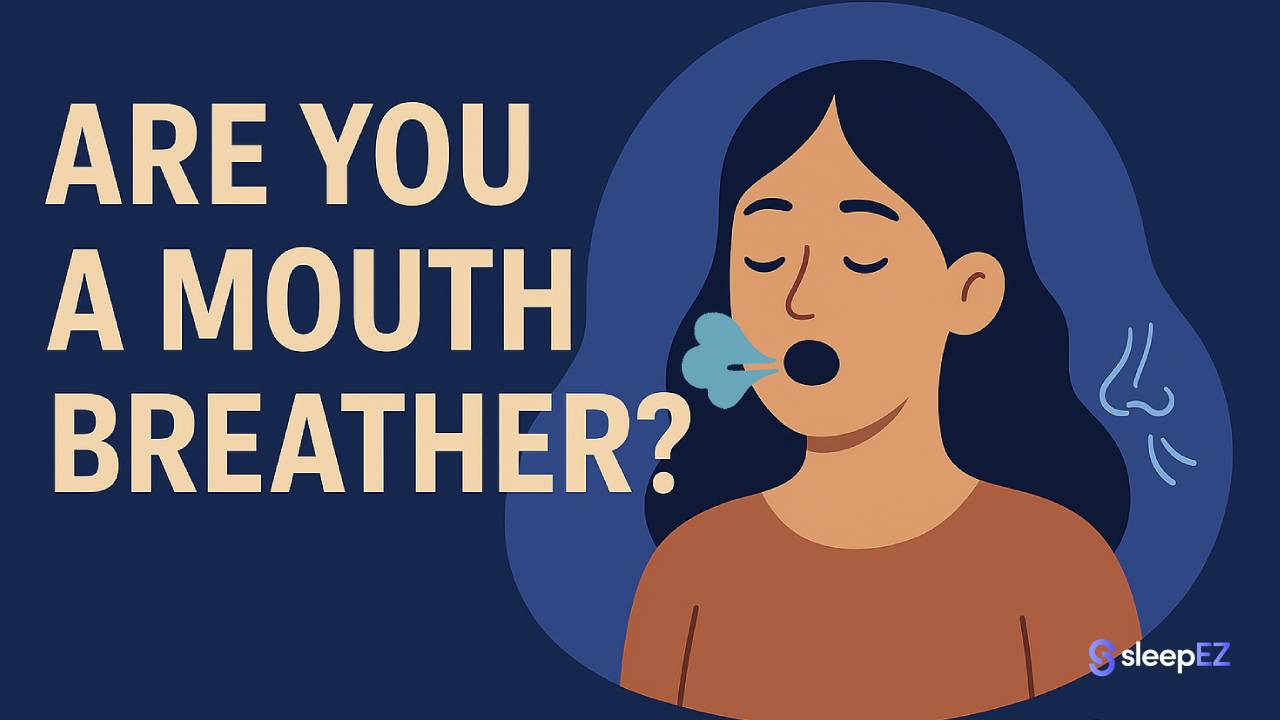You go to bed ready for a great night's sleep, only to wake up with a mouth as dry as the Sahara and a feeling of fatigue. The culprit is almost always the same: sleeping with your mouth open.
Learning to keep your mouth closed at night is one of the best things you can do for your sleep quality, dental health, and energy levels. This guide will show you exactly how to make it happen.
Step 1: Clear Your Nasal Passages Before Bed
Your body defaults to mouth breathing if it can't get enough air through the nose. That's why clearing your nasal passages before sleep is the foundation of breathing correctly at night.
Try these methods:
Use a saline nasal spray about 30 minutes before bed. The saltwater solution reduces inflammation and clears out mucus, making it easier to breathe through your nose. You can find these at any pharmacy, or make your own by mixing a quarter teaspoon of salt into a cup of warm water.
A neti pot works similarly but provides a more thorough rinse. Lean over a sink, tilt your head to one side, and pour the saline solution through one nostril so it flows out the other. It feels strange at first, but it's highly effective at clearing congestion.
Run a humidifier in your bedroom. Dry air irritates nasal passages and causes congestion. A humidifier keeps the air moist, which helps your nose stay clear throughout the night. Aim for humidity levels between 30-50%.
Step 2: Optimize Your Sleep Position
Gravity can cause your jaw to fall open, especially when sleeping on your back. Your tongue also shifts backward in this position, which can block your airway and force mouth breathing.
Here's what to do:
Try sleeping on your side. This position naturally keeps your jaw more stable and your airway open. If you tend to roll onto your back during the night, place a pillow behind you as a barrier. Some people even sew a tennis ball into the back of their pajama top.
Use an extra pillow to elevate your head slightly. This reduces the chance of your jaw dropping open and helps prevent nasal congestion by encouraging drainage. Don't overdo it though. Your neck should stay aligned with your spine.
Step 3: Practice Daytime Nasal Breathing
Breathing correctly during the day makes it more likely you'll do it at night. Your body learns patterns. If you breathe through your mouth all day, that's what it will default to when you're asleep.
Build the habit:
Set reminders on your phone to check if your mouth is closed during the day. Every time the reminder goes off, take a moment to notice how you're breathing. If your mouth is open, close it and take a few slow breaths through your nose.
Try the 4-7-8 breathing exercise through your nose. Breathe in for 4 counts, hold for 7 counts, and exhale for 8 counts. Do this a few times before bed to reinforce nasal breathing and calm your nervous system. The exercise trains your body to prefer nose breathing and helps you relax for sleep.
Step 4: Use a Tool to Keep Your Mouth Closed (The Nighttime Solution)
Steps 1-3 are helpful, but they don't guarantee your mouth will stay closed once you're asleep. You're unconscious. You can't control what your body does. For a direct solution, you need a tool that does the work for you.
The options:
Chin straps wrap around your head and hold your jaw closed. They work, but many people find them bulky and uncomfortable. The straps can shift during the night, and some users report jaw soreness from the constant upward pressure.
Mouth tape is a simple, non-invasive tool designed to provide a gentle seal over the lips, making nasal breathing your body's natural default all night long. It's light, flexible, and most people forget they're wearing it within minutes.
Unlike generic tapes, our Breathe Mouth Tape is specifically shaped for your lips, uses a skin-safe adhesive, and is flexible enough for comfort, ensuring it stays on all night without irritation. The design allows for natural lip movement, so you won't feel restricted. You can still open your mouth if needed, but the gentle resistance encourages nose breathing throughout the night.
Many people notice results the first night they use it. You wake up without the dry mouth, the sore throat, or the grogginess that comes from poor sleep quality.
Step 5: Know When to See a Doctor
Most people can solve mouth breathing with the steps above. But if you've tried everything and still struggle, there may be an underlying issue that needs medical attention.
See a doctor if you have a deviated septum, chronic nasal congestion that doesn't improve with basic treatments, or enlarged tonsils or adenoids. These structural problems prevent proper nasal breathing no matter what habits you change.
Also consult a healthcare professional if you suspect sleep apnea. Signs include gasping or choking during sleep, long pauses in breathing, excessive daytime fatigue, or loud snoring. Sleep apnea is a serious condition that requires proper diagnosis and treatment. Mouth tape is not a treatment for sleep apnea and should only be used after consulting with a doctor if you have this condition.
Take Control of Your Sleep
Stopping mouth breathing is an active process that involves preparing for sleep and using the right tools. You don't have to accept waking up tired and dry. By following these steps, you can reclaim your natural breathing pattern and experience the benefits of truly restorative sleep.
Curious about all the signs of mouth breathing? Check out our guide, Are You a Mouth Breather? 7 Signs.




Leave a comment
This site is protected by hCaptcha and the hCaptcha Privacy Policy and Terms of Service apply.